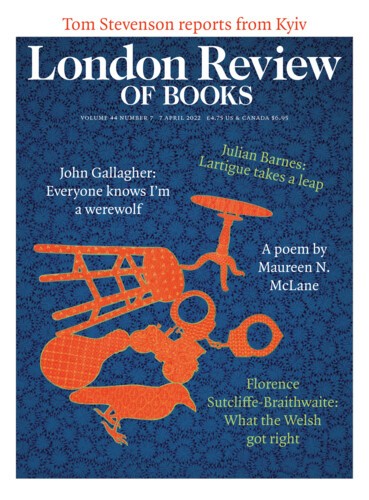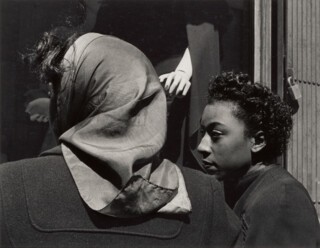Two walls and a lightbulb, that’s all it took. For any other photographer, a subject so simple, seemingly lacking the high-stakes drama and political critique associated with American documentary photography of this period (Gordon Parks’s protest shots, Robert Frank’s The Americans, Diane Arbus’s weirdos), wouldn’t be worth the film it was shot on – but it was different for Roy DeCarava. Hallway (1953) is a photo about nothing except a dark, empty corridor in a Harlem tenement: a quiet image that speaks to what it was like to inhabit these forgotten spaces, to be a poor, Black New Yorker in the middle of the 20th century.
In the recent DeCarava retrospective at the David Zwirner gallery, Hallway stood out among the rows of silver gelatin prints. At first glance, it appears as a dense mass of what the curator Zoé Whitley called his ‘infinite palette of grey tonalities’, which take on volume in their shadowiness. It takes a second for your eyes to adjust, and to see the light in the background of the photo. A light that refuses illumination, a light that is no light. The two narrow walls converge into a vanishing point with no discernible horizon. The experience of seeing Hallway up close mimics what I imagine it was like to be there, unmoored, when everyone else had gone to bed. DeCarava seems to say that there is something about this light, this hallway, that won’t let him be, and he tries to draw out its meaning. He was fascinated by walls as an urban motif, walls so thin you can hear the neighbours yelling at their kids, walls that make you feel at home, crumbling walls with broken windows.
DeCarava distrusted the binary notion of ‘black and white’ photography. He didn’t believe in a distinction between the ‘good’ light conditions a photographer needs and the ‘bad’ or dim light he avoids: he worked with the light there was, using the darkroom to consolidate his ever expanding palette of grey, seen in everything from a swan’s wing, to the curve of a saxophone, to the night around a couple’s embrace. He was looking for a modernist visual language that would capture Black subjects and Black social life without making them simply objects of sociological inquiry. His photographs, all shadow and blur, bring a different Harlem into view, one where the light falling softly on a coat-hanger demands attention, and where the hooks that a swing should hang from tell a story about children in a city which, as DeCarava’s sometime collaborator Langston Hughes wrote, will give them nothing but dreams deferred. DeCarava knew those streets, those fences, that tenement. He travelled, and took photographs in London and Bangkok, but his aesthetic was drawn from the places he had always known.
DeCarava was born in Harlem in 1919, growing up at the time of Aaron Douglas, Augusta Savage, Archibald Motley et al. His mother, Elfreda Ferguson, bought him art materials and enrolled him in classes. After high school, he worked in the poster division of the Works Progress Administration and studied at Cooper Union School of Art, where he learned painting and then architecture. In 1940, racism in the architecture department led him to move to the Harlem Community Art Centre on 125th Street and Lenox Avenue (home to many significant African American artists: Norman Lewis, Charles Alston and Selma Burke) and finally to the George Washington Carver School, where he was mentored by Charles White, whose paintings – among them, Black Pope (Sandwich Board Man) and Hope for the Future – constitute an archive of what he called ‘images of dignity’. I like to think of DeCarava’s work as an extension of that archive, his deep greys challenging the conceptual underpinnings of a world rigidly organised around black and white.
When he began taking photographs in the 1940s, America was at war, and the civil rights movement not yet underway. There were any number of ways to depict the approaching tumult, but DeCarava did it subtly. Graduation (1949) shows a girl in white dress and white gloves, flowers pinned to her chest, jewellery about her neck and on her ears, her hair curled and styled to perfection. She is pristine. You sense the care and effort put into her appearance, the hours it took to get her looking this way. Sitting between some auntie’s legs while her hair was combed and pulled until it conformed to the desired style, the fabric for her dress and gloves sourced from the right place or bought new. Maybe the jewellery is an heirloom, reserved for moments like this. You would expect to find her at a ball, awash in bright light, surrounded by other tulled women, the air smelling like shea butter, hairspray and perfume mixed with peach schnapps for the grown-ups.
Instead she is alone in a vacant lot. Behind her is the skeleton of a demolished building, graffiti on the wall to her right, broken objects everywhere. There’s a pile of trash in the foreground, with a crumpled newspaper carrying a headline about South Korea. With the rest of the image in shadow, the girl stands in a square of light, walking forwards, calmly and deliberately, as if moving out of the weight and rubble of history into her own future. DeCarava happened on her by accident, but she knows where she’s going. The photograph seems to capture it all: wars, the state’s abandonment of Black urban centres, a young girl on her way to her graduation. But it doesn’t seek to synthesise these facts: no single one overwhelms or denies the existence of the others. Light and dark, mixed into DeCarava’s grey palette.
In a career that spanned sixty years, from 1948 until shortly before his death in 2009, DeCarava took plenty of pictures of the already famous: jazz musicians like Billie Holiday and Ella Fitzgerald, Jimmy Scott’s hands. Sarah Vaughan turns and flashes a smile at the camera; Ornette Coleman looks mean and impressive. But there are also the photos of the unknown and unnamed: a garment worker tugging a covered cart, three men pushing heavy hand trucks on a busy street. The value of a retrospective is that these pictures can sit beside, say, a shot of the bassist Reggie Workman playing, his hands in motion, his face a grey blur. The men in these photographs are connected by the physicality of their labour, all of them busy with movement. These are kinetic images, in which the subjects almost become their work. The musician, too, is a labourer, a Black artist trying to make a living in a society that figures him as a performing monkey. Surviving in New York is its own art.
DeCarava saw things that other people didn’t. He saw beauty in a crushed aluminium can and the light behind a pair of curtains. He could see music, not just hear it. His pictures capture what jazz feels like: improvisation in motion, absolute creative freedom within a system that seeks to constrain and imprison. Ornette Coleman defined improvisation as music ‘that is not being written and calculated at that moment’. Many of DeCarava’s photographs look like this. The graduating girl appeared to him almost as an apparition. As for Hallway, he explained that he had suddenly stumbled on a corridor exactly like the ones he had grown up with, an experience that brought a rush of memories, sending him hurrying home to grab his camera and tripod. For DeCarava, photography couldn’t be prearranged or calculated: it was all about the particular ‘ambience’ of light in a building or the interplay of shadows on a vacant lot. Catching whatever was spontaneous or mysterious, he could photograph almost anything and make it sing.
Send Letters To:
The Editor
London Review of Books,
28 Little Russell Street
London, WC1A 2HN
letters@lrb.co.uk
Please include name, address, and a telephone number.


